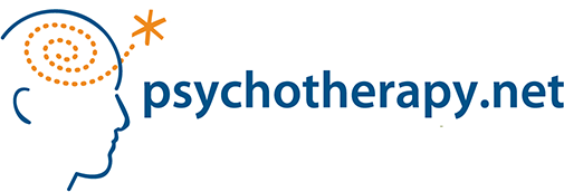One of the most common questions I am asked when people learn that I am a therapist is, “How can you listen to all those people?” What prompts that question is a fundamental misunderstanding of what it actually means to listen to another person. In my work, I strive to make my patients better listeners, not just better at self-expression.
As one patient said to me, “Once we stopped caring about facts, I was at a loss about what to say. Why bother to listen if the loudest person in the room always wins?” This can lead to what feels like a forced choice between joining the argument or leaving the conversation. Given the cacophony of disinformation and vitriol infecting our lives, strong listening skills are more critical than ever if we want to strengthen our connections.
It takes effort to be a good listener, but with practice the results can be truly life changing. Learning how is a teachable skill and foundational to good mental and physical health. There are five foundational components of active listening.
Feeling trapped in this dynamic is a common complaint about familial interactions. For example, one patient shared, “Before I’ve even taken off my coat, my father will tell me that I must be so happy with my job. It’s because he is happy that I went into law like him. I brace myself before I get there for his greeting.” After many failed attempts to have a more nuanced conversation, she no longer tries to dissuade him of his belief but is saddened by how superficial their relationship has become.
Second, active listeners understand that agreeing to listen does not assure agreement. This needs to be recognized by both the speaker and the listener. If my goal as a speaker is agreement, I must make that clear up front. When a patient tells me about a fight they had with their spouse, I use my words to express understanding of their hurt feelings, not to say they were right and their spouse was wrong. Whenever we frame a conversation as having a winner and a loser, the quality of the relationship suffers.
Third, active listening is actually hearing what the speaker has to say and trying to understand their needs. Too often people attempt to show they are listening by trying to solve a problem. This often feels patronizing and may devolve into an argument. For example, a patient of mine reports, “When I come home from a bad day at work, all I want is for my wife to listen, not tell me what I could do differently. Tomorrow, when I am rested and have some distance from the situation, I might be ready to listen to suggestions for how to do things differently, but at that moment I just want understanding. Is that too much to ask?”
One strategy that can be helpful in these situations is for the listener to ask, “Do you want to be hugged, heard, or helped?” By clarifying the unstated need of the speaker, the listener knows the desired outcome for the interaction and what will feel like effective listening to the speaker.
Fourth, active listening involves acknowledging feelings as well as facts, without conflating the two. There is a truism in psychology that anxious people can’t listen, to which I might add, neither can enraged people. Communicating that I understand the depth of a person’s emotional state is a necessary precursor to understanding what has upset them so much.
Recently, a patient called to share that she’d been diagnosed with breast cancer. Before I asked her the stage of her cancer or what her treatment protocol would be, we discussed how she felt hearing that she has cancer. Asking about her feelings was essential to providing care for her. Later we would brainstorm how she could get the best medical care possible, but until she felt heard she couldn’t process the onslaught of medical information her physicians were sharing with her.
Finally, active listening requires listening to ourselves as well as others. By setting a time limit or voicing discomfort if someone is using offensive language or yelling, allows us to take care of ourselves as listeners and increases the likelihood we will be willing and able to engage in active listening. When being a better listener, we will hopefully find ourselves in more meaningful conversations that will enrich our lives.
File under: The Art of Psychotherapy, Musings and Reflections
Like what you are reading? For more stimulating stories, thought-provoking articles and new video announcements, sign up for our monthly newsletter.
It is imperative that we challenge the assumptions people make about what it means to listen. Truly listening to another person so that they feel heard improves the quality of conversation and enhances the opportunity for understanding. It does not guarantee agreement, nor does it necessarily entail problem solving or changing anyone’s mind. Unfortunately, it seems that these days, people are far more interested in talking than listening, even if no one is listening to them. As one patient said to me, “Once we stopped caring about facts, I was at a loss about what to say. Why bother to listen if the loudest person in the room always wins?” This can lead to what feels like a forced choice between joining the argument or leaving the conversation. Given the cacophony of disinformation and vitriol infecting our lives, strong listening skills are more critical than ever if we want to strengthen our connections.
It takes effort to be a good listener, but with practice the results can be truly life changing. Learning how is a teachable skill and foundational to good mental and physical health. There are five foundational components of active listening.
Five Foundational Components of Active Listening
First, an active listener must have a genuine interest in the other person, a curiosity to hear what they have to say. Too often we think we know what the other person will say before they speak, so we spend our time preparing our comeback rather than listening to what the speaker says. Or we write people off as soon as we learn one thing we don’t like about them, and refuse to listen to anything else they have to say. Consequently, our world gets smaller, and we have less intimacy.Feeling trapped in this dynamic is a common complaint about familial interactions. For example, one patient shared, “Before I’ve even taken off my coat, my father will tell me that I must be so happy with my job. It’s because he is happy that I went into law like him. I brace myself before I get there for his greeting.” After many failed attempts to have a more nuanced conversation, she no longer tries to dissuade him of his belief but is saddened by how superficial their relationship has become.
Second, active listeners understand that agreeing to listen does not assure agreement. This needs to be recognized by both the speaker and the listener. If my goal as a speaker is agreement, I must make that clear up front. When a patient tells me about a fight they had with their spouse, I use my words to express understanding of their hurt feelings, not to say they were right and their spouse was wrong. Whenever we frame a conversation as having a winner and a loser, the quality of the relationship suffers.
Third, active listening is actually hearing what the speaker has to say and trying to understand their needs. Too often people attempt to show they are listening by trying to solve a problem. This often feels patronizing and may devolve into an argument. For example, a patient of mine reports, “When I come home from a bad day at work, all I want is for my wife to listen, not tell me what I could do differently. Tomorrow, when I am rested and have some distance from the situation, I might be ready to listen to suggestions for how to do things differently, but at that moment I just want understanding. Is that too much to ask?”
One strategy that can be helpful in these situations is for the listener to ask, “Do you want to be hugged, heard, or helped?” By clarifying the unstated need of the speaker, the listener knows the desired outcome for the interaction and what will feel like effective listening to the speaker.
Fourth, active listening involves acknowledging feelings as well as facts, without conflating the two. There is a truism in psychology that anxious people can’t listen, to which I might add, neither can enraged people. Communicating that I understand the depth of a person’s emotional state is a necessary precursor to understanding what has upset them so much.
Recently, a patient called to share that she’d been diagnosed with breast cancer. Before I asked her the stage of her cancer or what her treatment protocol would be, we discussed how she felt hearing that she has cancer. Asking about her feelings was essential to providing care for her. Later we would brainstorm how she could get the best medical care possible, but until she felt heard she couldn’t process the onslaught of medical information her physicians were sharing with her.
Finally, active listening requires listening to ourselves as well as others. By setting a time limit or voicing discomfort if someone is using offensive language or yelling, allows us to take care of ourselves as listeners and increases the likelihood we will be willing and able to engage in active listening. When being a better listener, we will hopefully find ourselves in more meaningful conversations that will enrich our lives.
***
Active listening can make us feel vulnerable. Sometimes the divide is too great and ending the conversation or ultimately the relationship is the right decision. But, hopefully, more often our efforts to listen will increase our understanding of one another and bring us closer. In our fragile world we need to honor the power of listening.
Questions for Thought and Discussion
How important is it for you to “teach” your clients to listen effectively?
Which of the author’s five components of active listening is most resonant with you?
Can you think of one of your clients who would benefit from improved active listening skills?
File under: The Art of Psychotherapy, Musings and Reflections






